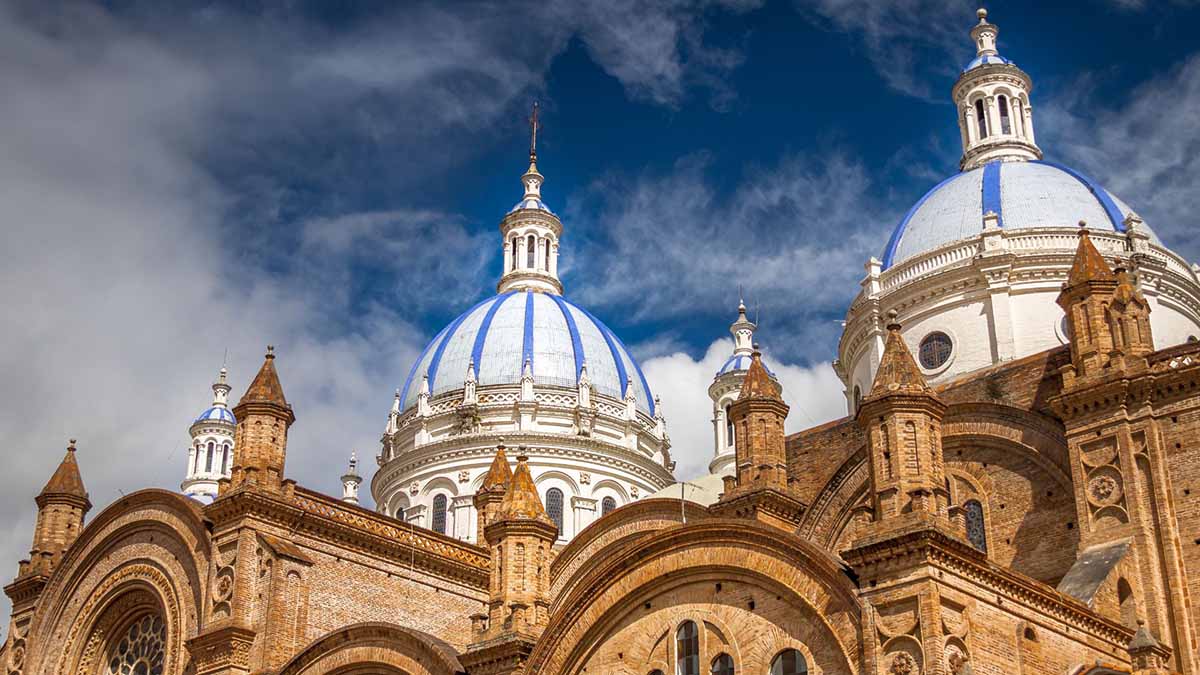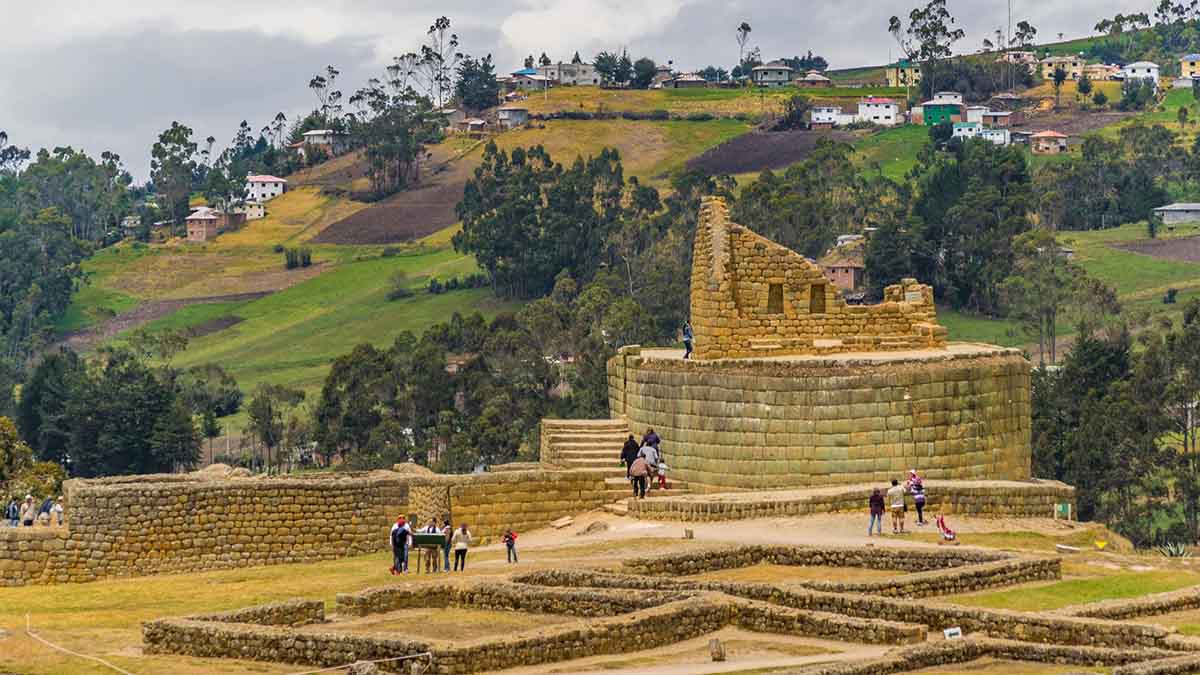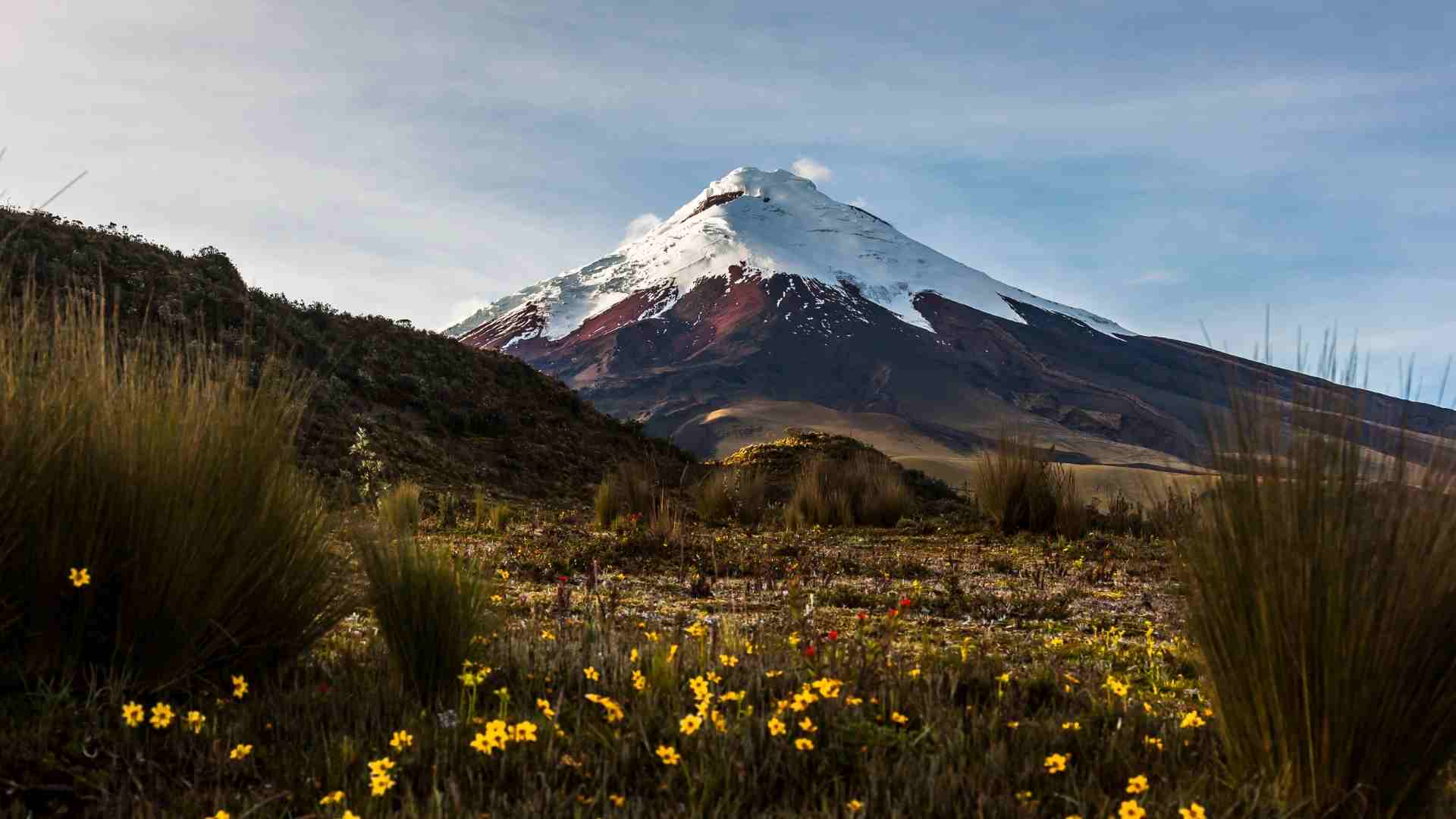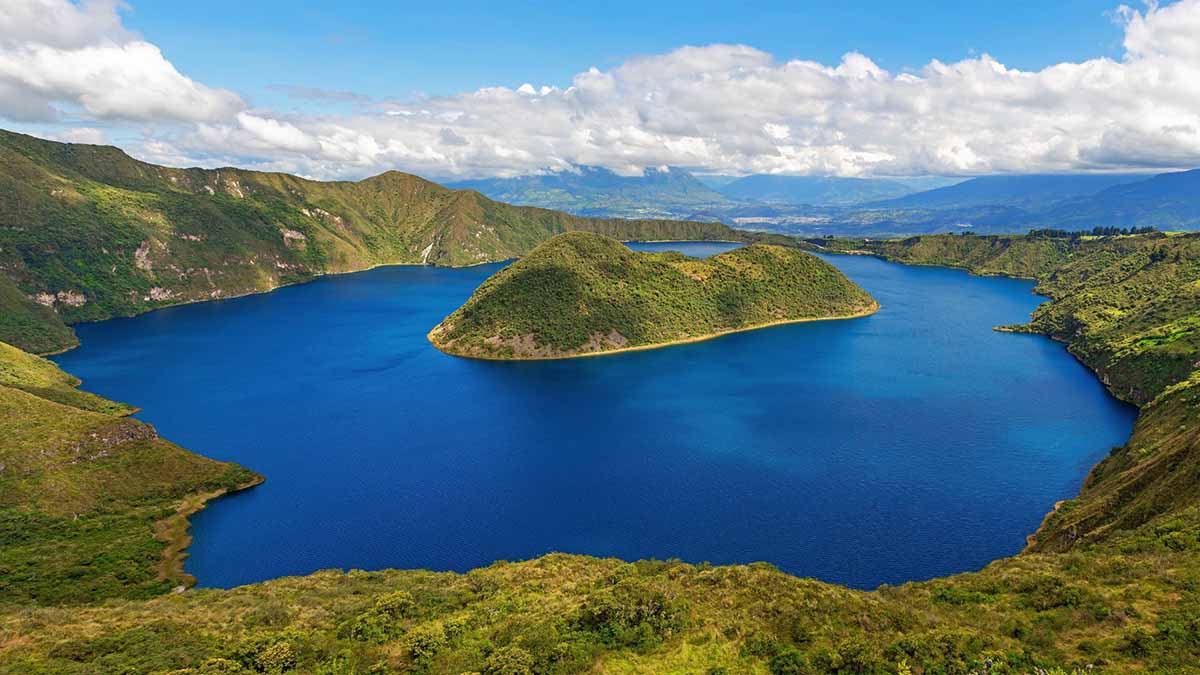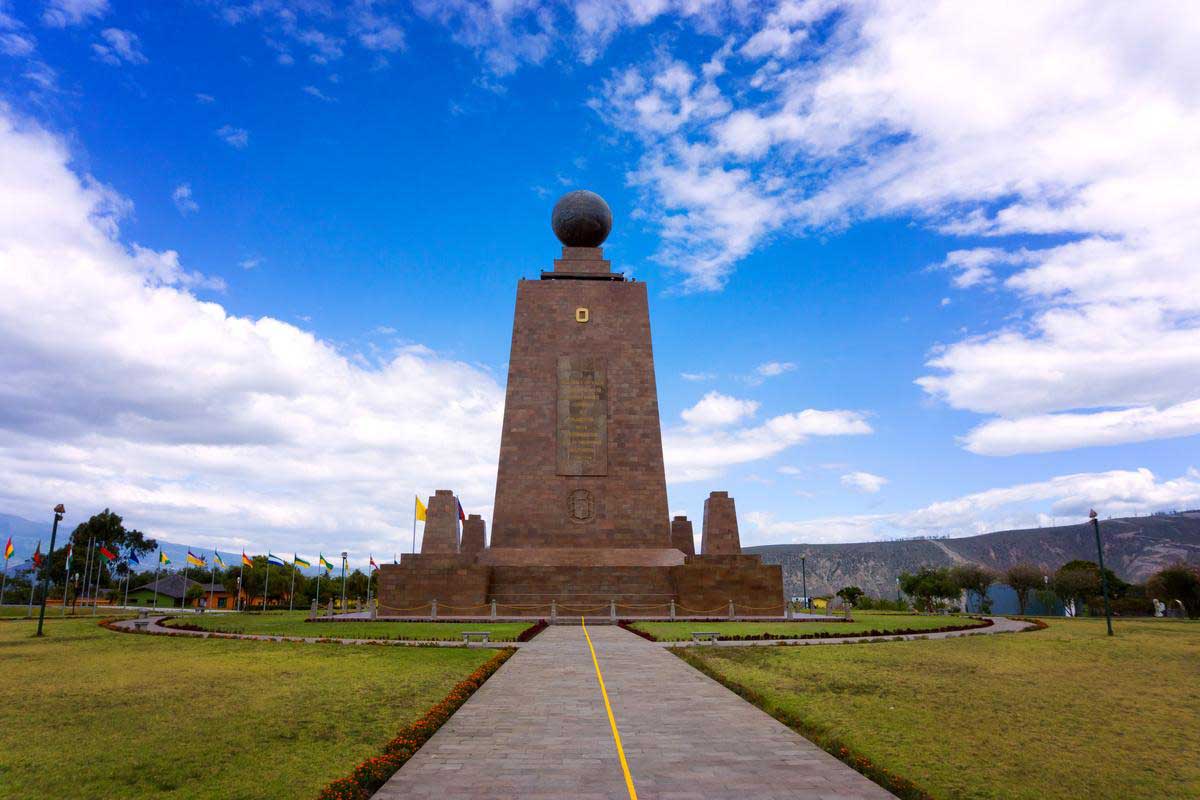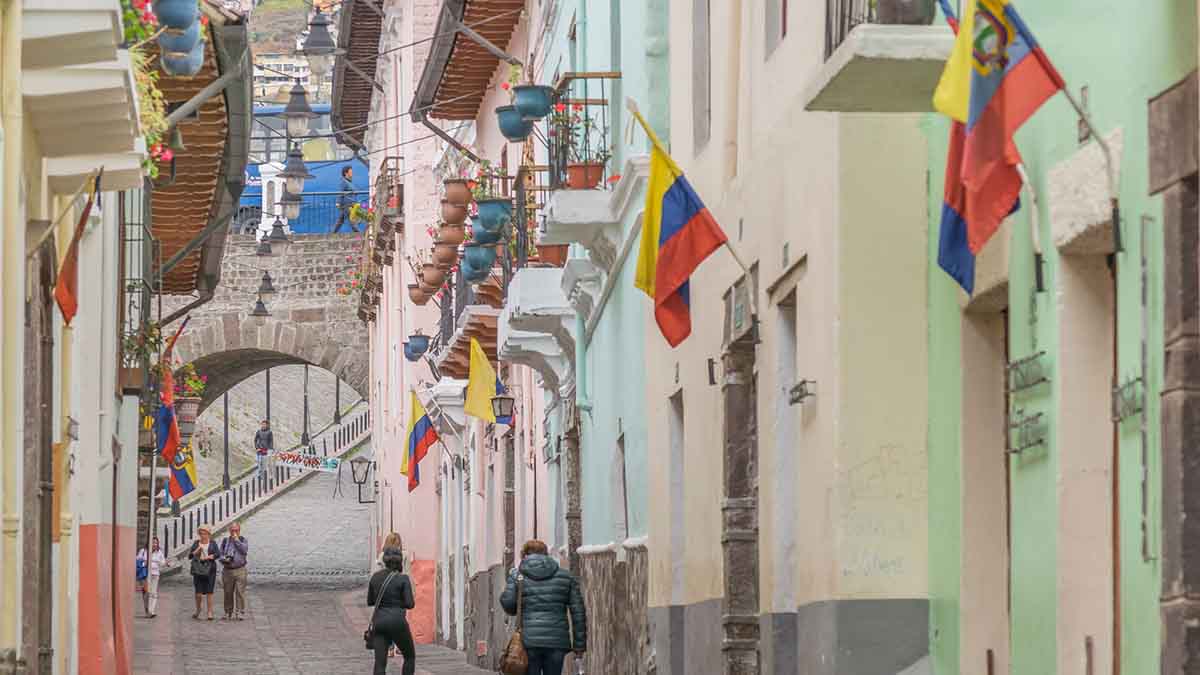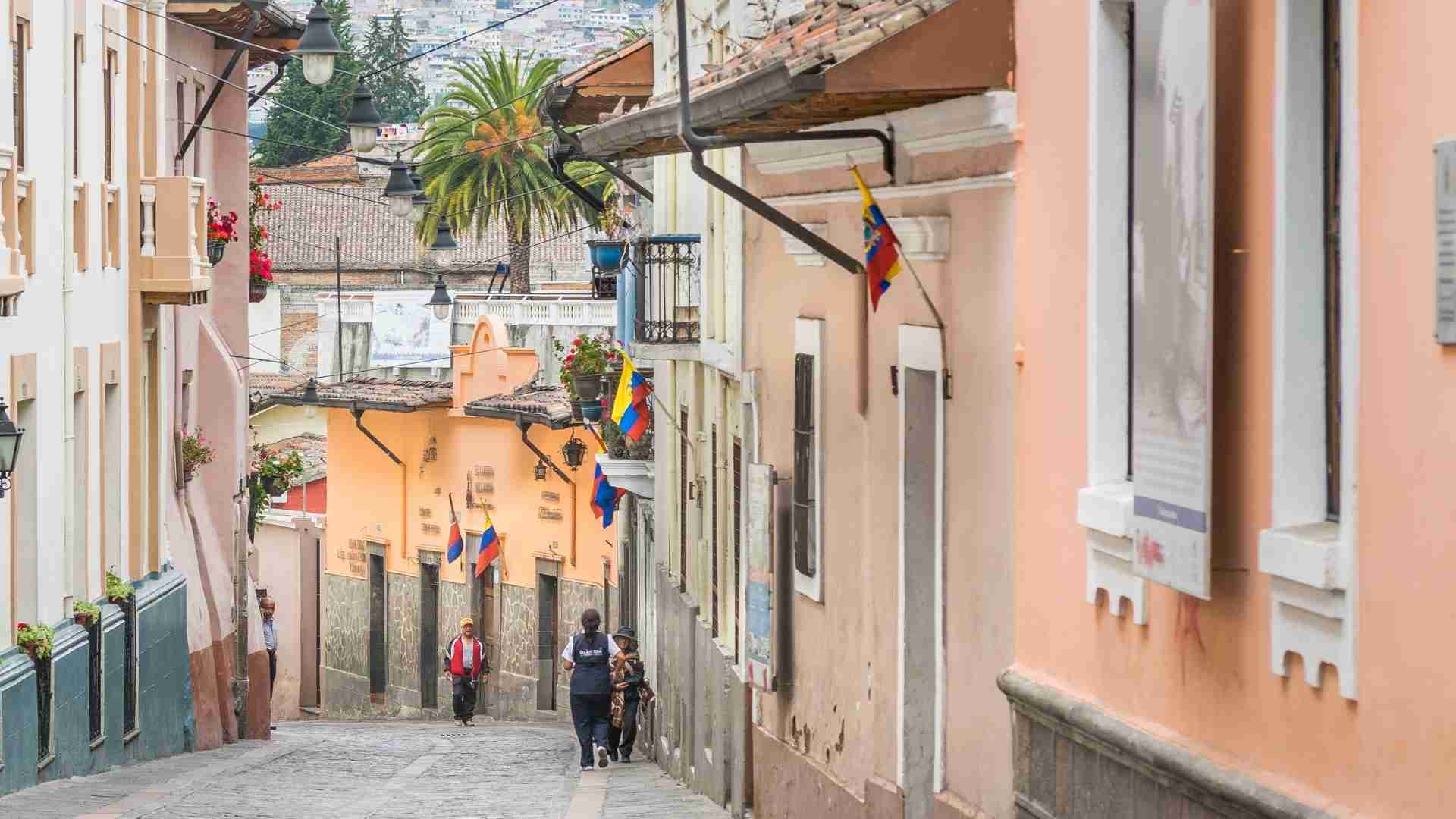Arrive in Quito and enjoy a private transfer to your hotel. Explore Quito’s colonial center, a UNESCO World Heritage Site.
Andes & Avenida de los Volcanes
This 9-day tour takes you through the stunning landscapes and rich cultural heritage of Ecuador’s Andean highlands. From exploring the colonial architecture of Quito and Cuenca to marveling at the volcanic peaks along the Avenue of the Volcanoes, each day offers a unique experience, including visits to indigenous markets, national parks, and historical sites.
-
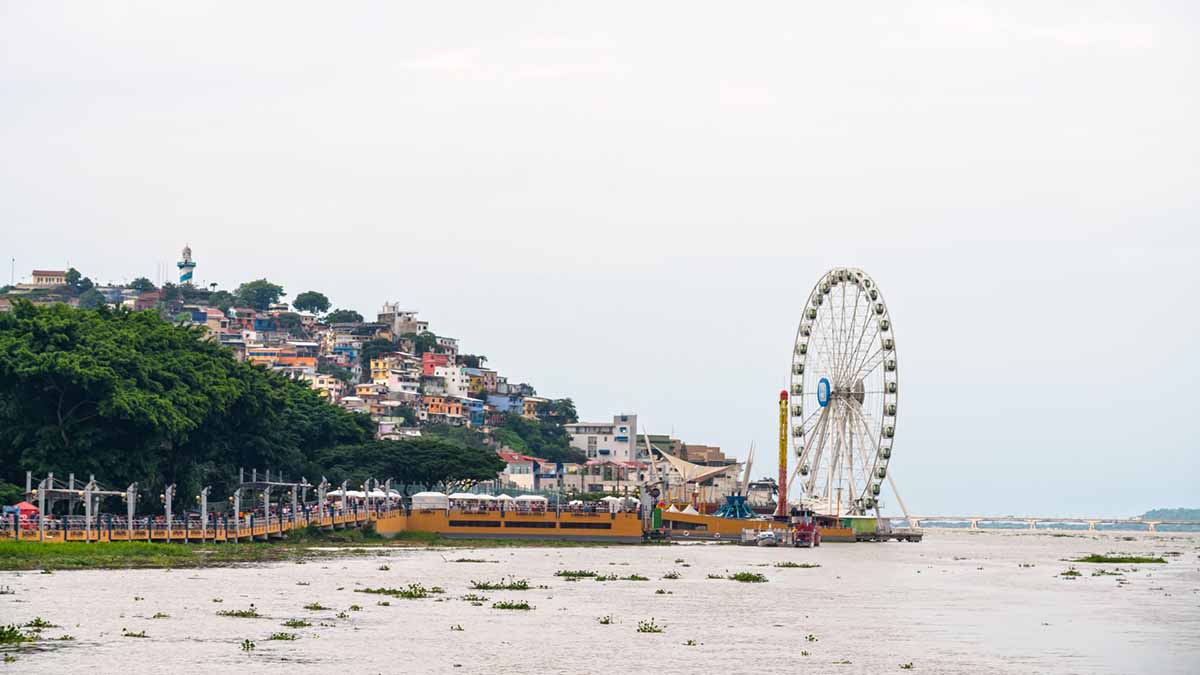
-
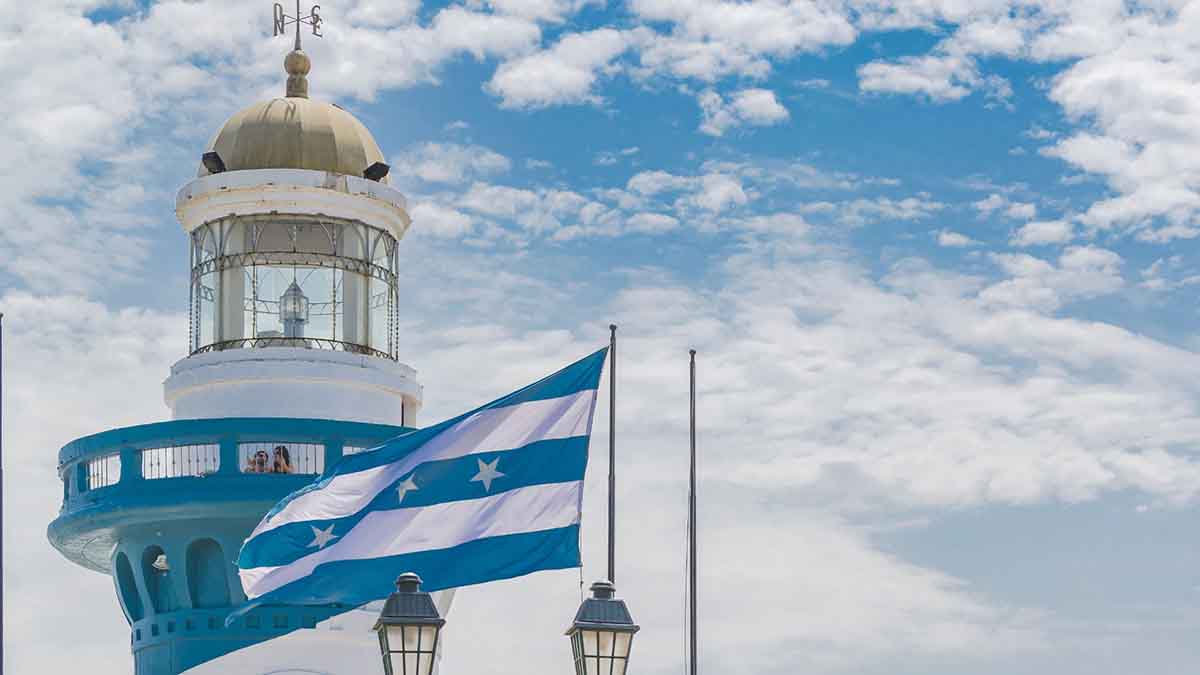
-
+ 7
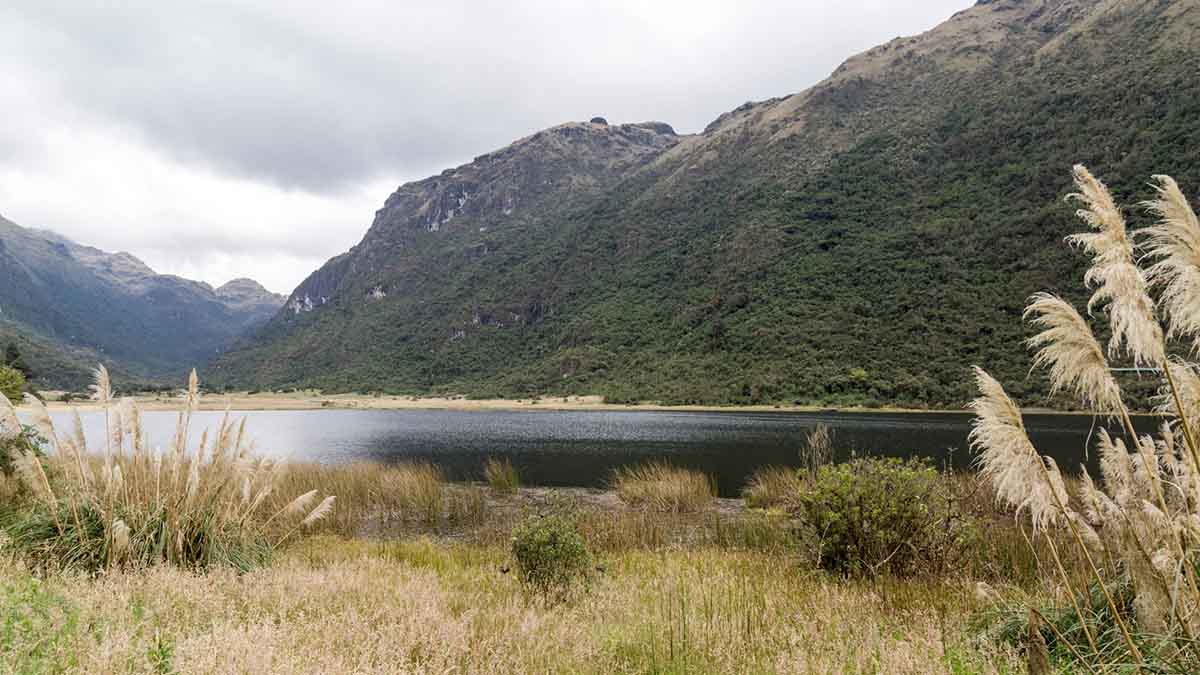
Highlights
- Discover the historical centers of Quito and Cuenca, both UNESCO World Heritage Sites.
- Visit the equatorial line at Mitad del Mundo and experience unique geographical phenomena.
- Hike in Cotopaxi National Park, home to one of the highest active volcanoes on earth.
- Explore the vibrant artisan market in Otavalo, a hub for traditional crafts and textiles.
- Walk through Cajas National Park’s beautiful highland lakes and unique ecosystems.
Includes
- Accommodation in double rooms
- Transportation
- Bilingual naturalist guide (English, Spanish)
- Scheduled Visits
Not Included
- Air Ticket
- Soft drinks and alcoholic beverages
- Tips
Itinerary
Day 1 : Arrive In Quito
Day 2 : Quito City Tour & Middle Of The World Monument
Start the day with a guided tour of Quito’s historic center, a UNESCO World Heritage Site. You’ll visit the impressive Church of La Compañía, known for its baroque architecture and gold-leaf interior. Continue to the Basilica del Voto Nacional and climb its towers for a panoramic view of the city. In the afternoon, travel to the Mitad del Mundo, where you can stand on the equatorial line and visit the Intiñan Museum to learn about the unique geographical and cultural significance of this place.
Day 3 : Otavalo Market & Lake Cuicocha
Travel north to the vibrant city of Otavalo, famous for its indigenous market filled with colorful textiles, hand-woven crafts, and traditional clothing. Interact with local artisans and learn about their craft techniques. Later, travel to Lake Cuicocha, a stunning crater lake formed by volcanic activity. Enjoy a short hike along the edge of the lake, taking in the breathtaking views and unique flora. You’ll also visit the leather town of Cotacachi before returning to Quito.
Day 4 : Cotopaxi National Park & Riobamba
Travel to Cotopaxi National Park, home to one of the highest active volcanoes in the world at 19,347 feet (5,897 meters). Explore the park’s unique high-altitude ecosystem and, if conditions permit, hike to the José Rivas Refuge at 15,780 feet (4,810 meters). Keep an eye out for wildlife such as wild horses, Andean foxes, and condors. After visiting the park, travel to the city of Riobamba, located in the shadow of Chimborazo, Ecuador’s highest mountain.
Day 5 : Ingapirca Ruins & Cuenca
Head south to visit the ancient ruins of Ingapirca, the most important Inca archaeological site in Ecuador. Your guide will explain the history and significance of these stone structures built by the Cañari and later occupied by the Incas. The Temple of the Sun, used for ceremonies and astronomical observations, is a highlight of this site. Continue to Cuenca, known for its well-preserved colonial architecture and vibrant cultural scene.
Day 6 : Cuenca City Tour
Discover the charm of Cuenca on a guided city tour. Visit major attractions such as the New Cathedral, with its distinctive blue domes, and the flower market in the Plaza de las Flores. Explore the Museum of Modern Art and the Pumapungo Archaeological Park to gain a deeper insight into the region’s history and artistic traditions. The day ends with a stroll along the Tomebamba River, where you can admire the picturesque blend of colonial and modern architecture.
Day 7 : Cajas National Park & Transfer To Guayaquil
Depart Cuenca for Cajas National Park, known for its rugged landscapes and numerous glacial lakes. Take a guided hike through the park to observe its unique flora and fauna, including llamas and a variety of bird species. After your hike, descend from the highlands to the coastal city of Guayaquil. The change in climate and scenery is dramatic as you leave the cool, misty highlands for the warm, tropical environment of the lowlands.
Day 8 : Guayaquil City Tour
Explore Ecuador’s largest city with a tour of its vibrant neighborhoods and historic sites. Stroll along the scenic Malecon 2000, a riverfront promenade lined with parks, monuments, and cafes. Visit Las Peñas, the city’s oldest neighborhood, where you can climb the 444 steps to Cerro Santa Ana for a panoramic view of Guayaquil and the Guayas River. The tour ends with a visit to the Parque Seminario, where you can see the famous iguanas roaming freely.
Day 9 : Departure
After breakfast, you’ll be transferred to the Guayaquil International Airport for your flight home or to your next destination, ending your Andean adventure.
Travel Tips
- Dress in layers, as temperatures can change significantly throughout the day.
- Pack sunscreen, sunglasses, and a hat to protect yourself from the high-altitude sun.
- Comfortable walking or hiking shoes are essential for the varied terrain.
Weather Preparedness
The Andean highlands have mild, spring-like weather, with cool evenings and warm days. Rain is possible year-round, so a waterproof jacket is recommended. In contrast, Guayaquil has a tropical climate with hot and humid conditions.
Fitness Requirements
Moderate physical condition is required due to light hikes at high altitudes and walking in historical centers. Acclimatization is advised for activities in high-altitude locations like Cotopaxi and Cajas.
Accommodation
- Quito: Ikala or similar
- Riobamba: Mansión Santa Isabel or similar
- Cuenca: Hotel Los Balcones or similar
- Guayaquil: Unipark or similar
FAQs
The dry season (June to September) is the best time for clear views of the volcanoes and comfortable trekking conditions.
Some travelers may experience altitude sickness in highland areas. It is recommended to consult with your doctor and take it easy for the first few days.
Yes, the tour is suitable for families, with cultural visits and outdoor activities that are enjoyable for all ages.
LAND BASED PROGRAMS HOTELS
Quito
- Illa Experience Hotel or similar
Riobamba
- Abraspungo or similar
Cuenca:
- Hotel Cruz del Vado or similar
Guayaquil:
- Wyndham or similar
